Have you ever heard about a tiny and friendly crested bird? Well, Cockatiel it is. This bird is vibrant in color and has a charming personality that has won the hearts of bird enthusiasts all over the world.
Now, one question comes to our mind when we hear the bird named Cockatiel, can this bird talk? Yes, this bird can mimic human sounds and utter words spontaneously. Moreover, this small parrot is a native Australian and is popular as an adorable pet because of their friendly nature and intelligence.
In this blog, I am going to share some interesting facts about Cockatiels along with their eating habits, behaviors, habitats, physical issues, breeding schedule and so on.
To know more about this fascinating and feathered bird, let’s delve into the enchanting world of Cockatiels.
Characteristics of Cockatiel: What Does It Look Like?
The color of Cockatiels varies according to their gender, age and size. For instance, wild Cockatiels have gray bodies with yellow faces. Furthermore, their attractive charm is further enhanced by their vivid eyes, which are frequently circled in yellow.
The table below shares a quick overview of this charming bird.
| Features | Facts |
|---|---|
| Common name | Cockatiels |
| Scientific name | Nymphicus hollandicus |
| Family | Cacatuidae |
| Mating behavior | Monogamy |
| Incubation period | 3 weeks |
| Communication mode | Mimicry |
| Size | 12-14 inches |
| Weight | 75 to 125 grams |
| Average Lifespan | 10-15 years (in the wild) 15-30 years (in captivity) |
| Head color | Vary from light gray to black |
| Tail | A combination of gray, white, pale yellow and black |
| Feathers | Soft and fluffy |
| Crest | Can raise or lower down according to mood |
| Diet | Herbivore |
| IUCN Red List | Least concern (LC) |
| Habitat | Tropical, Savannah, Grassland |
Size and Weight
The usual length of a Cockatiel is between 12-14 inches, a tiny to medium-sized parrot species, measured from head to tail tip. Their long tails, which offer grace and balance to their slim bodies, accentuate their elegant forms.
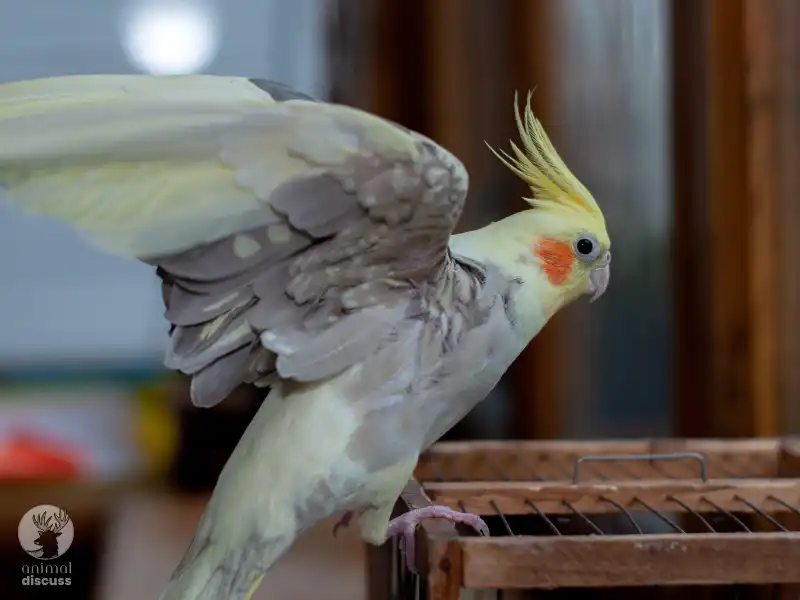
Cockatiels are often recognized for their light and agile build. Also, males typically weigh more than females, with weights ranging from 75 to 125 grams.
However, their average life span is 10-15 years. But the captive Cockatiels can survive 15-30 years. Moreover, the highest survival time is 36 years till this time which is recorded.
It totally depends on Cockatiels’ nutrition, veterinarian checkups and caring, because these things can maintain a healthy life of a Cockatiel.
Physical Structures
The prominent crest above their heads, which Cockatiels can adjust to match their moods, is one of their most recognizable features. Their long tail, slender, sleek body, and bent mouth for cracking seeds are also physical characteristics of them.
To know more about physical structures, I am giving some of the points here:
- The Elegant Tails
The stunning fan-shaped tail of Cockatiels accomplishes their visual charm. Usually a combination of gray, white, and pale yellow, the tail feathers have fine black barring that adds attractiveness. Moreover, its tail serves multiple functions.
- Features of Face
The fascinating features of Cockatiels are capable of expressing a vast number of emotions. Their round, black eyes gleam with interest and intelligence. Depending on their age and sex, the head color can vary from light gray to black.
A Cockatiel’s cheeks are typically a vivid orange color, which gives its appearance a touch of warmth.
- Feathers and Crest
Accordingly, a Cockatiel’s feathers are a visual treat for the eyes. Cockatiels have feathers that are soft and fluffy, and they come in a variety of colors and designs.
They are known for having a crest on top of their heads, which they may raise or lower to suit their mood. It is made up of long, graceful feathers that have the ability to smooth down.
Explore everything about pet birds! Read the full article now.
Different Species of Cockatiels and Color Mutations
Have you ever thought about diverse species of Cockatiels? It may surprise you to learn that there are multiple species of this captivating parrot.
Likewise, Cockatiels exist in a world of vivid colors and mutations, with each kind having its own distinct beauty and character. And color mutation means a genetic alteration in genes responsible for the bird coloration.
Without wasting time, let’s see the colors and characteristics of varied species of Cockatiels:
Gray Cockatiel
These gray Cockatiels live in the wild and are mostly found in dry grassland in Australia. The outside borders of each wing have white flashes which mix with the primary color of gray plumage.
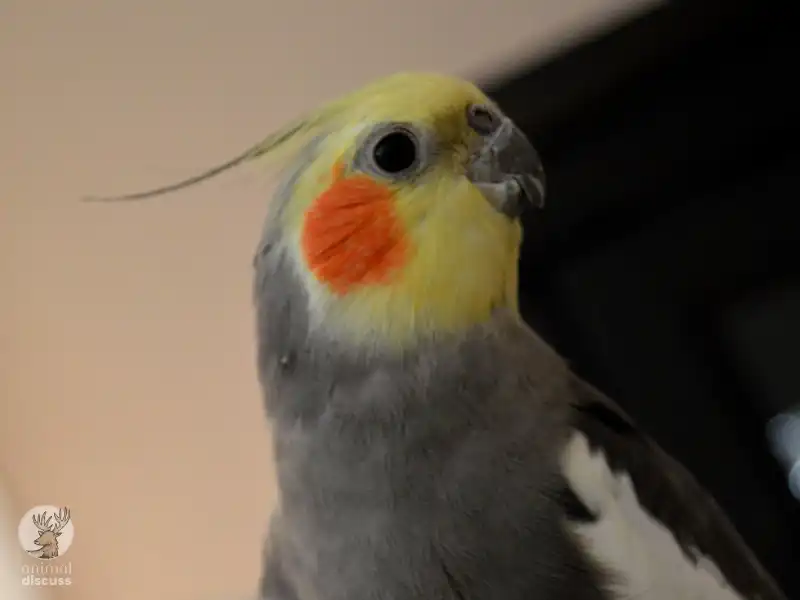
The female Cockatiel’s face color is light gray and the male’s one is either yellow or white.
Lutino Cockatiel
Lutino is now as common as gray Cockatiels. They have white or faintly yellow bodies with yellow heads and orange patches on their cheeks. The younger version of Lutino has ruby red eyes which become darker with age. Also, they weigh between 3-4.4 ounces.
White-Faced Cockatiel
This white-faced cockatiel is a stunning color mutation from the Cacatuidae family. This one first appeared in 1964. They lack orange and yellow color-carrying genes. So, white color is visible in male white-faced Cockatiels, but the female contains gray color.
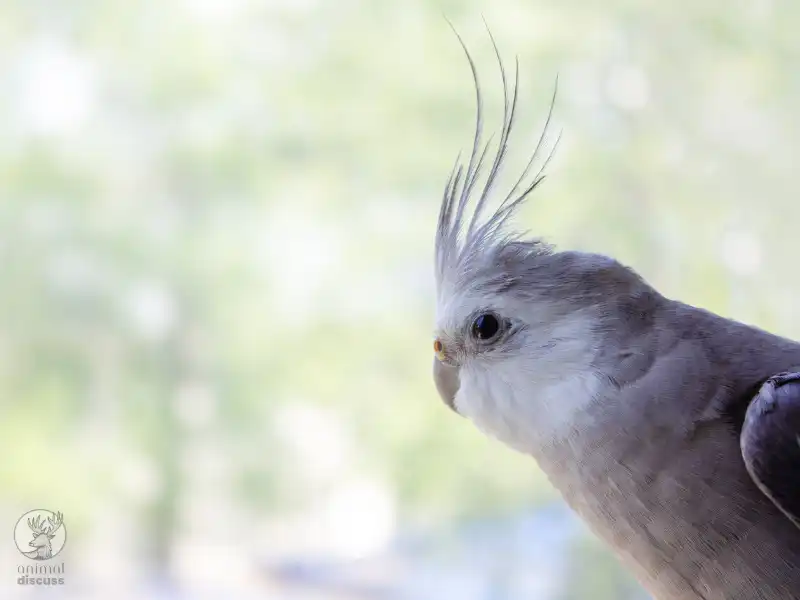
Furthermore, the bar markings beneath the tail feathers are only available to females; males do not have these markings. Also, they can grow 12 inches and weigh 3-4 ounces.
Albino Cockatiel
Albino Cockatiels are the cross breed of lutino and white-faced Cockatiels. The “Whiteface gene” eliminates all orange and yellow pigments that a Lutino would normally have. Also, all the gray and black is eliminated by the “Lutino gene”.
Cinnamon Cockatiel
Cinnamon is another common Cockatiel mutation. The male’s brown color is darker than female and younger ones. Their skin has white dots on their secondary feathers.
Pied Cockatiel
This is the first color mutation of Cockatiels. They are mostly gray to light yellow with white feathers in color. Also, they have orange cheeks. In addition, clear pied is like lutino and albino.
Pearl Cockatiel
A light dusting of white is applied to pearl Cockatiels. This adds a sparkling shine to their appearance. The beautiful orange cheek patches that both mutations still have, give a warm touch to their glowing beauty.
What Does a Cockatiel Eat?
These charismatic birds need proper food on time. Because they have some health issues which will also be discussed in the caring sections of Cockatiels.
Now, let’s start talking about proper diet and some common diets of Cockatiels.
Proper Diet and Feeding Schedule
Cockatiels require food that is nutritious for their physical and mental well-being. Their main food is premium grain or seed mix, with occasional treats such as millet sprays and organic veggies and fruits added. In order to avoid obesity or malnutrition, eating schedule consistency is essential.
So, how much food should we feed a Cockatiel? Well, you should try to feed your Cockatiel a well-balanced diet with roughly 70% of pellets and 30% of fresh vegetables.
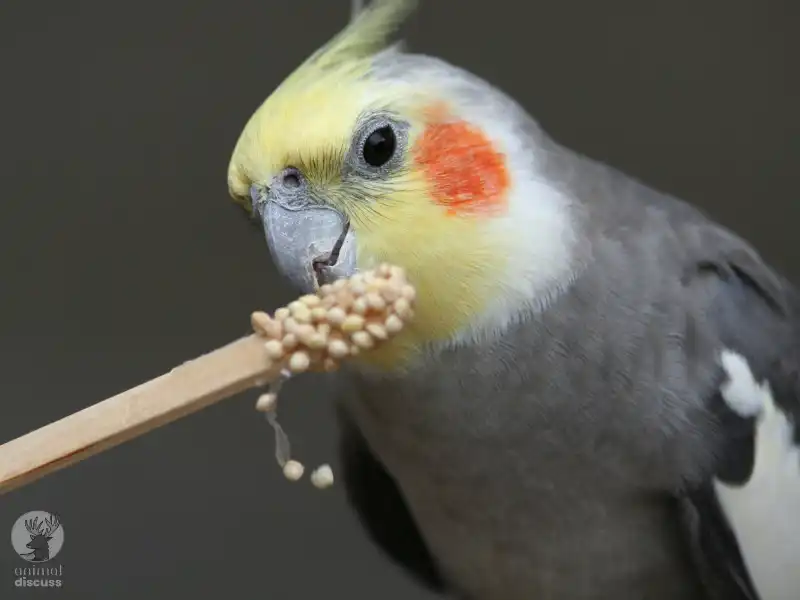
Depending on the bird size and activity level, the component sizes may change. A veterinarian with expertise in bird nutrition can assist in choosing a suitable feeding schedule because it varies from bird to bird along with their environment.
Common Dietary Considerations
Cockatiels have particular nutritional needs, which include a preference for foods high in vitamins, such as bell peppers, carrots, and leafy greens. They also need a constant supply of fresh, clean water.
Other than this short glimpse of eating habits, check this article solely focused on “cockatiels’ food and diet.“
Behavioral Facts of Cockatiels
Cockatiels are social creatures and can easily communicate because of their friendly nature. They also have high learning abilities. How do they behave with other creatures or humans? Well, some behavioral facts about Cockatiels are:
Communicative Abilities
The remarkable diversity of vocalizations shown by Cockatiels, from upbeat chirping to melodious whistles, makes them exceptionally vocal birds. They make amusing companions since they can somewhat mimic human speech.
Social Nature
Due to their inherent friendly nature, Cockatiels enjoy the company of both other Cockatiels and their human caregivers. They take pleasure in associating with one another and in having fun, humming, and exploring their environment.
Learning Abilities
As intelligent birds, Cockatiels may learn to do tricks, obey orders, and even control objects with their feet and beaks. They are naturally inquisitive and quickly adjust to new situations and educational possibilities.
Having a Shower
An essential component of a Cockatiel’s cleanliness practice is dust bathing. To distribute the tiny particles of dust throughout their feathers, they will move their body, fluff their feathers, and even roll in the dust.
This keeps their feathers clean and healthy by removing excess oil, filth, and parasites.
However, can Cockatiels’ behavior be predicted? Yes, by observing their movements. For example, puffed-up tail feathers and hissing may suggest fear or enmity, whereas held-high tail feathers indicate enthusiasm and attentiveness.
Also, gaining an understanding of these little indications will improve communication with the feathery companion.
Care to learn more about Cockatiels’ behavioral facts? Follow up this article “Cockatiels’ Behavior”.
Where Does Cockatiel Live?
Cockatiels are mostly found in open scrublands, bush, and woodland regions. They are often kept in large cages that closely imitate their native habitat, complete with lots of perches, playthings, and space for flying.
Moreover, a Cockatiel’s wandering lifestyle is one of its distinguishing features. Cockatiels are nomads, in contrast to certain feathered brethren who cling to a certain area.
They create flocks that can be as small as two people or as large as hundreds. This depends on the constantly shifting availability of food and water.
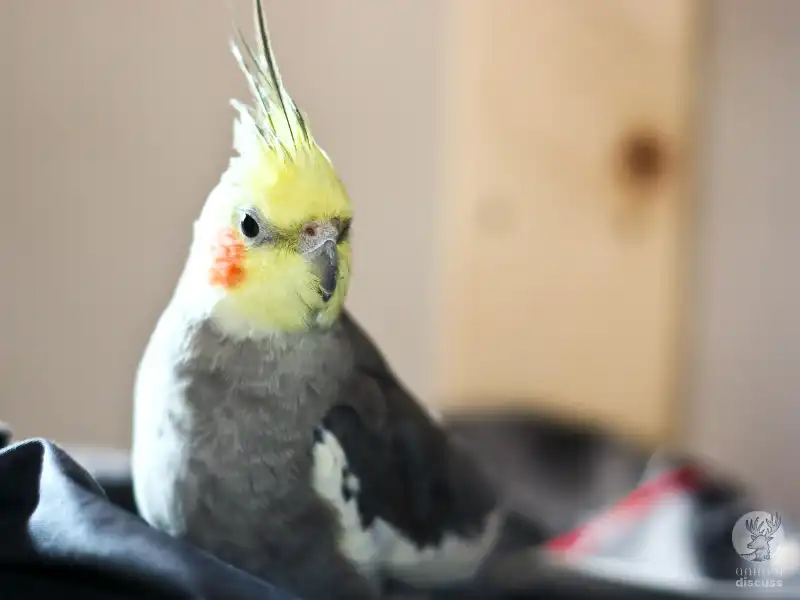
Furthermore, Cockatiels choose trees for nesting for safety and comfort. They especially like eucalyptus trees because their hollow branches make the ideal hiding place for them to raise their young. These natural cavities provide defense against predators and the weather.
However, it’s not easy being a little bird like Cockatiels in the Australian Outback. That’s because these tiny creatures have developed amazing adaptations to deal with the difficulties.
With the frequently limited plants, their powerful mouths are ideal for breaking open hard seeds, which are a key source of nutrition. They can even repurpose their pee and absorb moisture from their diet, demonstrating their extraordinary water efficiency.
Interested to learn more about their habitat? Read this “Where Do Cockatiels Live ? Let’s Explore!”.
When Does Cockatiel Breed?
Like many other birds, Cockatiels are photoperiodic breeders, meaning that daylight hours have an impact on their breeding cycle. They mate in the spring and summer, when the days are longer, in the wild.
Thus, in captivity, they might try to reproduce all year round if they receive regular interaction with light.
But giving them access to the natural daylight cycles—longer days in the spring and summer, shorter days in the fall and winter—will help control their natural tendency to reproduce and establish a more organic rhythm.
Here, the Cockatiel also has some breeding behavioral factors, such as:
- Male may display their wooing by offering food to females that they have regurgitated.
- Singing, whistling, and chattering can indicate breeding excitement.
- Males may become more forceful, and females moodier and more aggressive.
How Can We Best Care For Cockatiels?
It is necessary to understand the needs of Cockatiels and how we can provide the best possible care. Cockatiel needs regular checkups, proper feeding, observation of their common health issues and so on.
Let’s start the discussion on care for Cockatiels:
- To keep the Cockatiels’ feet healthy, provide them with a range of perches constructed from various materials, such as wood, rope, and cork.
- Fresh fruits and vegetables should be added to high-quality pellet food on a daily basis. For calcium, don’t forget to take a cuttlebone!
- Purchase a roomy cage that is at least three feet long, two feet wide, and two feet tall. The key is lots of levels and space for climbing.
- At least 12 hours a day should be spent with full-spectrum lights or natural sunlight. It takes vitamin D to keep a Cockatiel healthy.
- Keep away from smoking, strong odors, and loud noises since those can irritate your pet birds. Provide a serene and tranquil atmosphere for them.
Regular Checkup: Cockatiels require routine veterinary inspections to maintain their health and well-being. An experienced bird veterinarian may perform tests, look for any underlying medical conditions, and administer the required shots and therapies.
Common Health Issues: Numerous health issues, such as obesity, mites, respiratory infections, malnourishment, and feather plucking, can affect Cockatiels.
Hence, it’s critical to keep their living space tidy, feed them balanced food, and often check on their general health.
Common Challenges
Cockatiels can have behavioral problems, just like any other pet, which calls for tolerance and understanding.
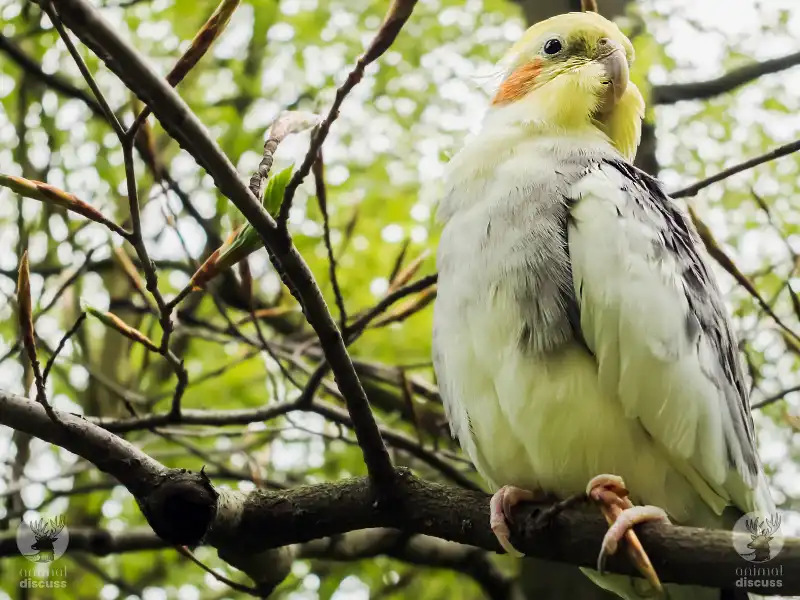
In this case, effective reinforcement training and environmental enrichment can be used to address these issues. Thus, it can provide solutions for managing and overcoming them. Among the frequent issues include –
- Biting and aggression
Cockatiels have the tendency to bite, especially when provoked or afraid. It’s crucial to handle your pet birds carefully and socialize them from an early age.
Instruct them to step up onto the finger, taking care not to shock them with abrupt movements. Try not to react if your Cockatiel bites, since this will just encourage them to do so in the future.
- Feather Plucking
In Cockatiels, feather plucking is a popular behavioral issue. Numerous things, such as stress, boredom, hormone fluctuations, and medical disorders, can contribute to it.
In that case, take your Cockatiel to the veterinarian to rule out any medical reasons if you observe it plucking feathers. After the root problem has been identified, you can take appropriate action to address it. Then, provide your Cockatiels the stimulation and assistance they require to cease plucking.
- Obesity
If Cockatiels aren’t provided a nutritious diet and given adequate exercise, they can quickly gain weight. Therefore, it is best to feed pellets, fresh produce, and a small number of seeds. Make sure your cockatiel has lots of playtime and climbing opportunities as well.
Frequently Asked Questions
Now, let’s check out some commonly asked questions regarding Cockatiels and their characteristics.
01. How much bond do Cockatiels have with feathered friends?
Cockatiels typically require several days to a few weeks to develop the ability to take charge and build a strong relationship with their owners. Positive reinforcement combined with patience and consistent training can help accelerate the development of bonds.
02. Does Cockatiel socialize with other creatures other than feather friends?
Yes. Cockatiels are social animals, and they are not able to live alone. In addition, they need companionship with humans or other creatures like birds.
Conclusion
Cockatiels are fantastic pets because of their distinctive appearance, charming behavior, and capacity for learning and communication. In captivity, they offer their owners happiness and companionship.
Furthermore, Cockatiels need healthy food such as fresh fruits, vegetables and seeds as well as special care for their survival. Also, they need regular checkups by veterinarians because of their health issues.
Finally, we can say that a Cockatiel can flourish and become a beloved member of your family if you provide it with the right care, food, frequent checks, and lots of mental stimulation.
References
- https://petopedia.petscorner.co.uk/cockatiels-small-parakeets/
- https://www.iucnredlist.org/species/22684828/132056250
- https://www.petmd.com/bird/exotic/all-about-cockatiels
- https://animaldiversity.org/accounts/Nymphicus_hollandicus/

